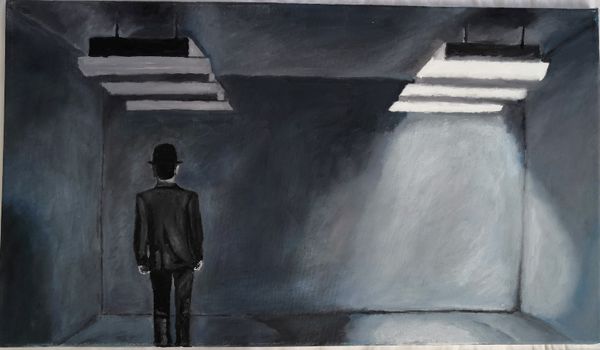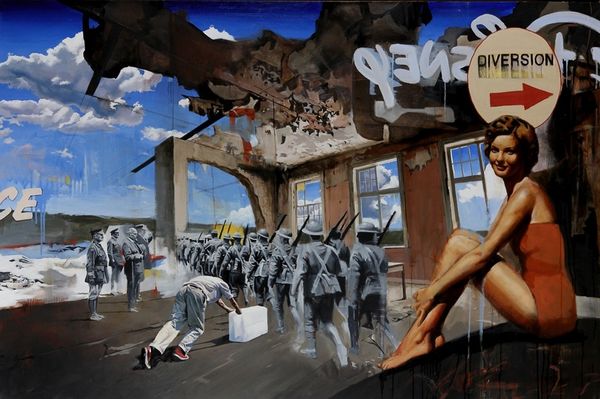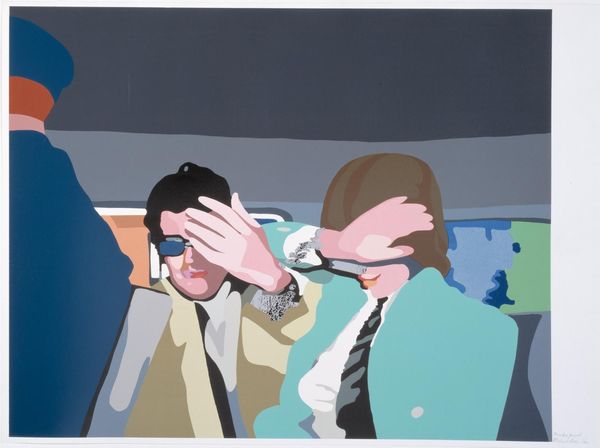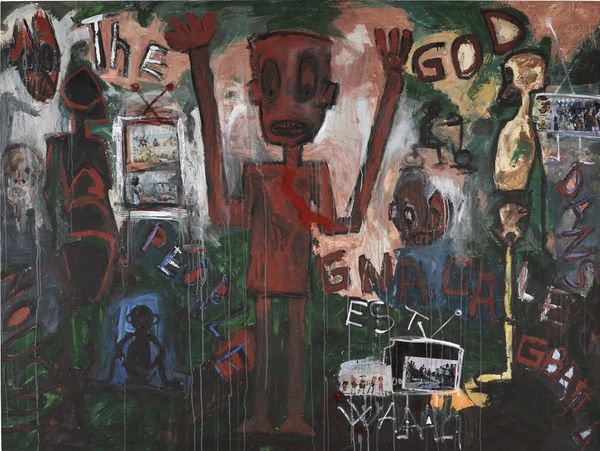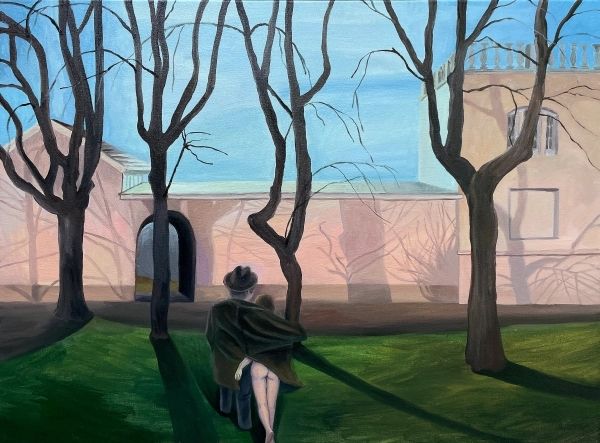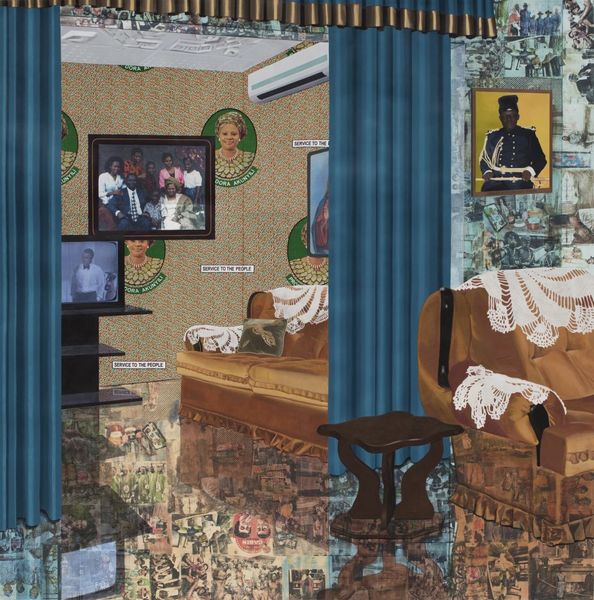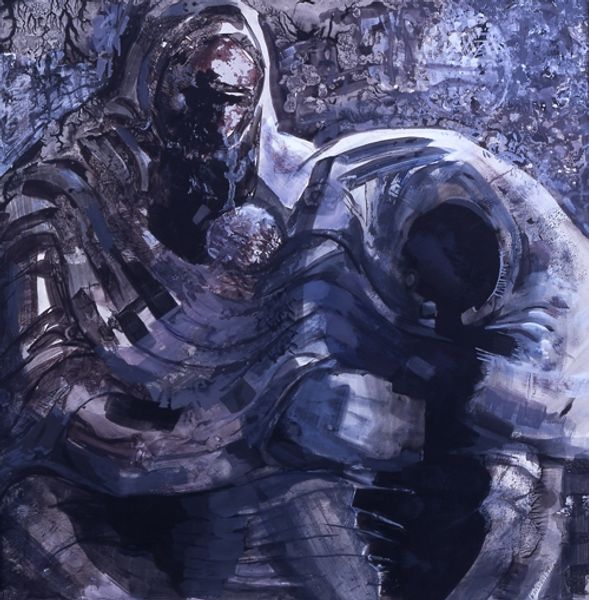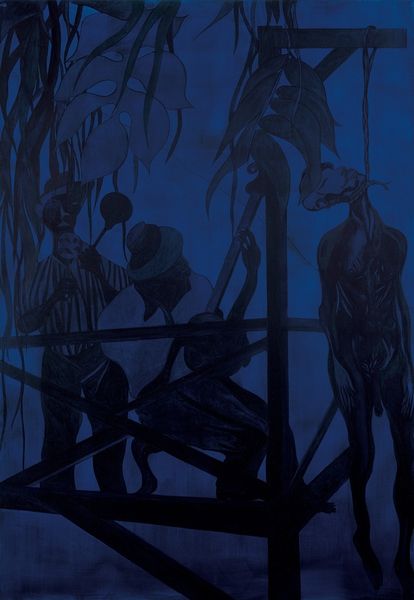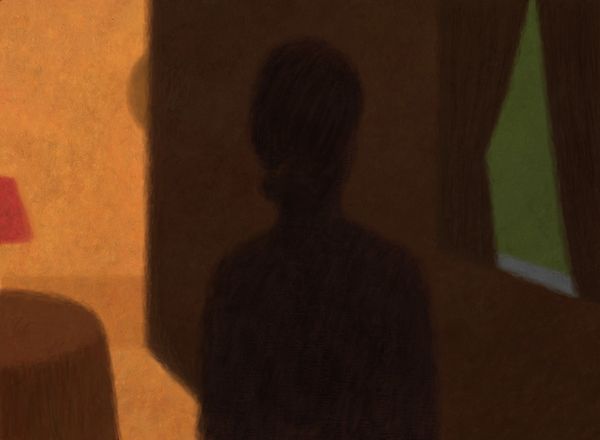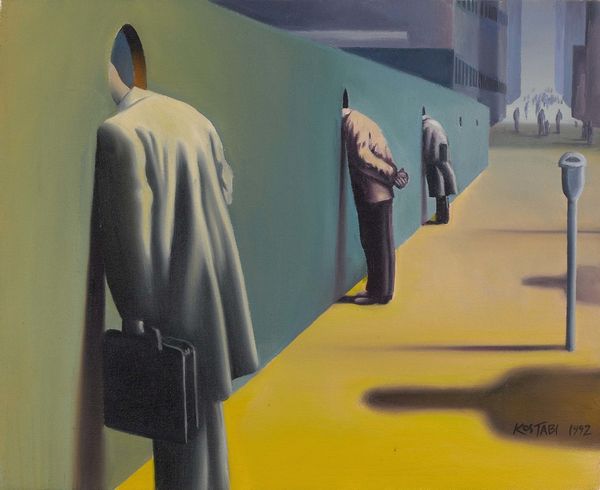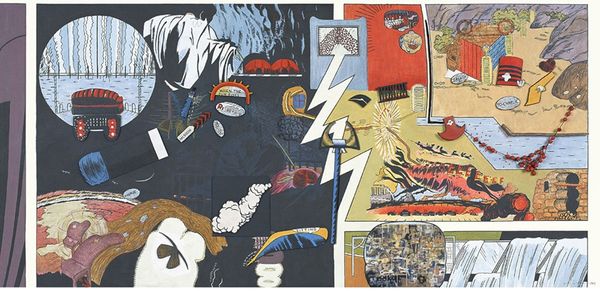
painting, acrylic-paint
#
portrait
#
figurative
#
urban landscape
#
contemporary
#
street-art
#
urban
#
painting
#
street art
#
acrylic-paint
#
figuration
#
urban art
#
cityscape
Copyright: Modern Artists: Artvee
Editor: Monica Ikegwu’s “Dark Night I,” painted in 2018 with acrylics, gives off a vibe of urban alienation. The figures seem isolated despite being in a cityscape. What elements stand out to you? Curator: From a materialist perspective, consider the acrylic paint itself. Ikegwu's choice—this readily available, relatively inexpensive medium—situates the work within a context of accessibility and perhaps even a democratization of art making, as opposed to traditional, more costly oil paints. Editor: So the medium itself hints at a specific socioeconomic angle? Curator: Precisely. And observe how the flat application of the paint flattens the image, almost mimicking a digital rendering. This brings into play questions of labor, both the artist's and, perhaps indirectly, the digital labor that increasingly shapes our perception of reality. What does it mean to represent "urban" through this specific, arguably mediated, lens? Editor: It's interesting; the title says "Dark Night I," as though this is part of a series. Does the repetition, suggested by the title, have bearing on the social and political elements that are the product of labor? Curator: Absolutely, and in a number of different ways. Consider that repetition. A materialist analysis isn’t solely about physical stuff, but about repetitive social processes – the cycles of production, consumption, and representation inherent to contemporary urban life. The series might be repeating observations. Editor: That makes me think more about how these recurring images reinforce those urban themes you're talking about. Thanks, that perspective has changed how I see the piece. Curator: Likewise; your attention to the serial aspect adds another layer of interpretation. It encourages thinking about the continuation and endurance of urban realities and social concerns.
Comments
No comments
Be the first to comment and join the conversation on the ultimate creative platform.
